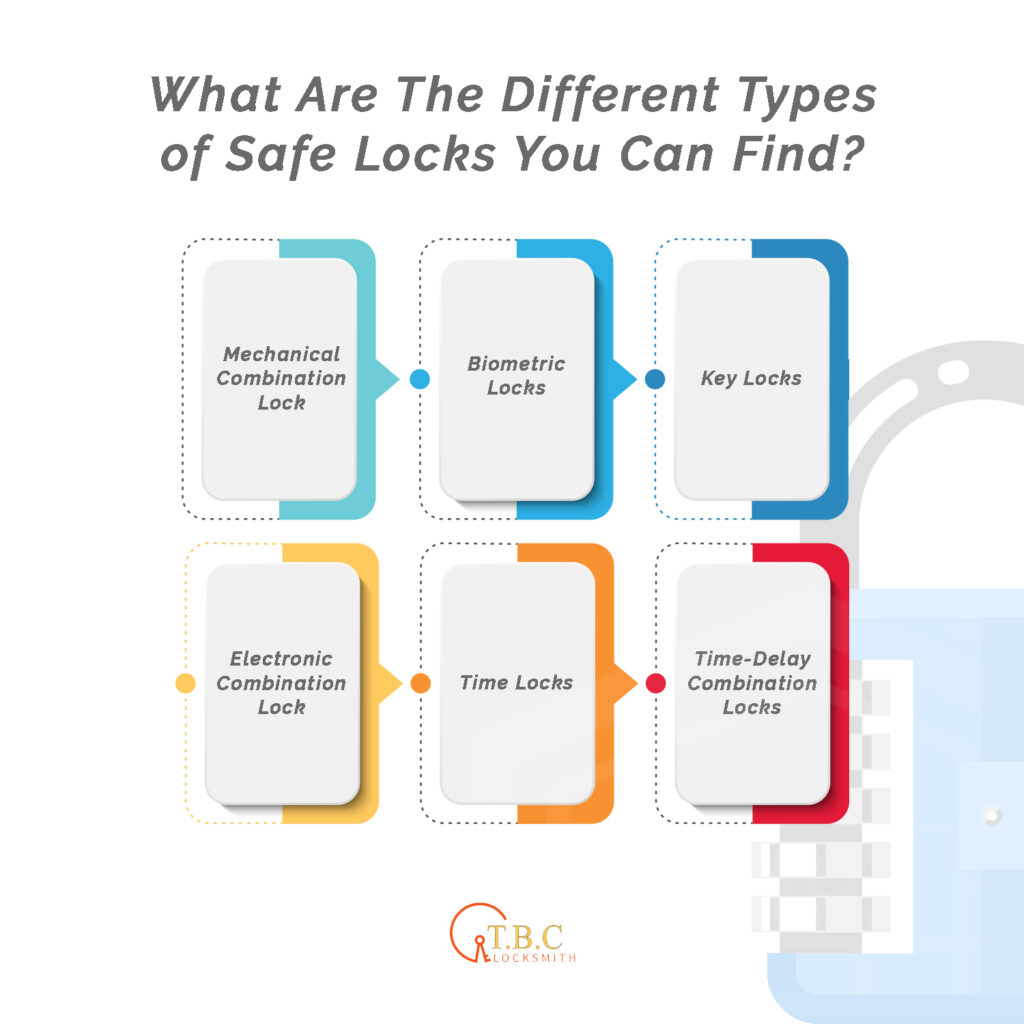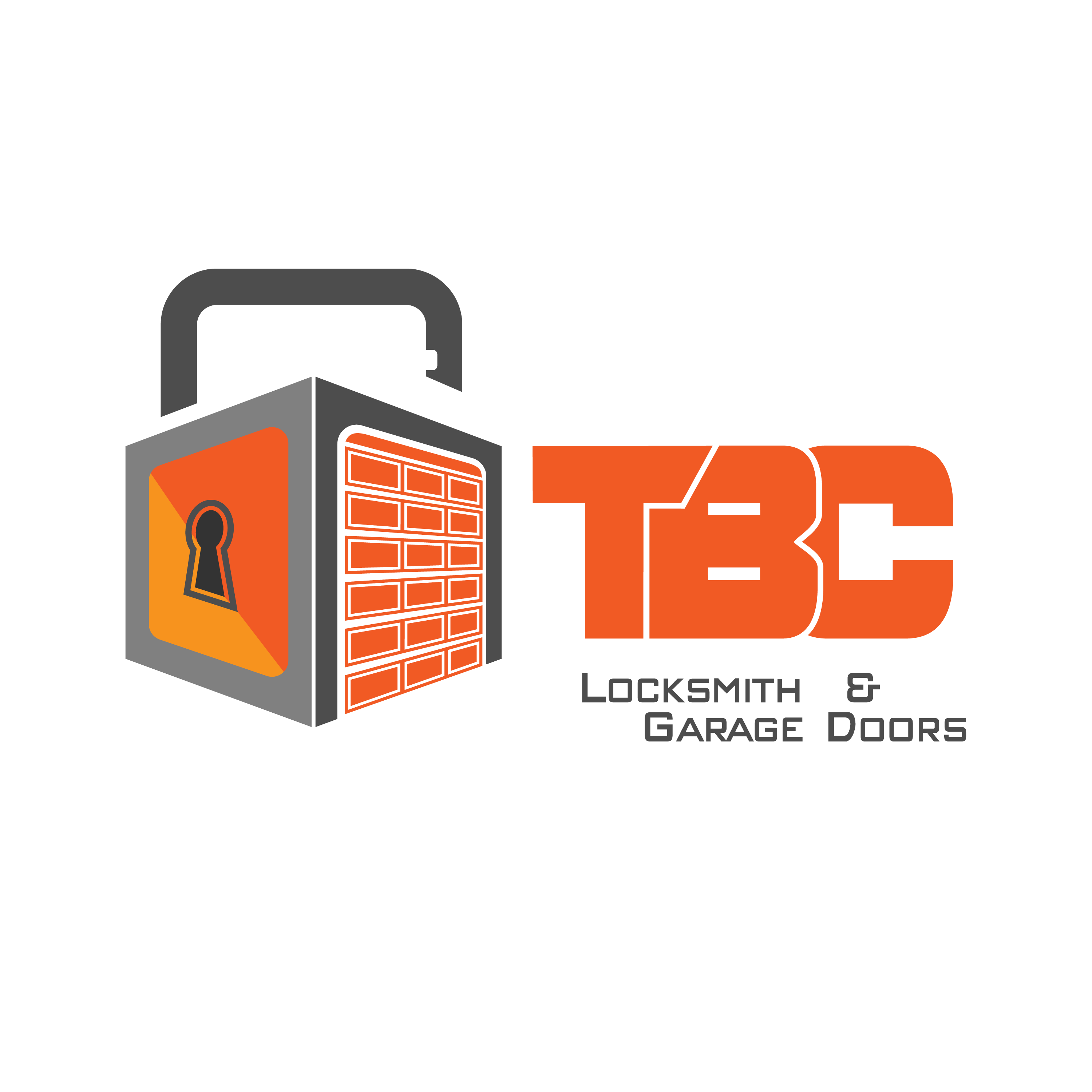A lot of homeowners have a safe lock to store their valuables. Safes are a secure, reliable way to keep your valuables secure. In this article, discover everything you need to know about your safe lock, how to open a locked safe, and many more.
What are the Different Types of Safe Locks You Can Find?
There are different types of locks you can find for your safe. Some of these locks include:

Mechanical Combination Lock
A mechanical combination safe lock does not require the use of keys. When compared to electronic locks, the mechanical combination lock has a much lower risk. However, they offer a limited quantity of combinations.
Biometric Locks
Biometric locks can be either electronic and mechanical. They brilliantly solve key management’s problem; however, they have their downside — the chance of forgetting the code. However, biometric locks have been modified to handle this problem.
Biometric locks enable access by simply reading a distinctive physical feature of every person. Some of these features could include fingerprints or the retina. Fingerprints are practical and secure because they are unique and cannot be copied. You can also never misplace them, and they are always close by.
Key Locks
Key locks are the more common safe lock option. They are usually less expensive and simple. However, they have a severe protection issue which is key management. If you leave your keys in the room where your safe is set up, you stand the risk of robbers finding it and opening the safe easily.
A key lock is the easiest type of safe lock to install. The downside to this type of lock is that the key can easily go missing and store the key after safe lock installation.
Electronic Combination Lock
You can find digital safes that have no keys. These types of locks are called electronic combinations and have no key management problems. Certain locks have an emergency key that allows the door to be opened in the event of an electronic fault or if someone forgets the code.
The emergency keys for an electronic combination safe lock are easier to handle as they are hardly ever used practically. They are mostly required in the instance of a crisis. The keys are usually kept separate from where the safe is installed.
The electronic combination lock combines all the security supplied by the high number of potential combinations with the capability of not worrying about key management.
Time Locks
A time lock is usually a part of a locking device. This type of locking device is typically found in high-security containers such as bank vaults. Time locks are designed to protect the safe or vault’s opening till it gets to the pre-specified period. It normally has a timer, and whether or not the right combinations are regarded does not matter.
Time locks are installed in the safe or vault door. The locks are normally three times lock. The first lock tag reaches zero gives access to the vault, while the other two are for backup purposes.
Time-delay Combination Locks
A time-delay combination lock is usually an electronic and digital combination lock. Normally, it is built with a delay timer, which delays unlocking the safe lock by a set delay period, typically less than one hour.
Time delay locks are a direct contrast to the time lock. Unlike time locks, time delay locks operate every time the safe is unlocked. However, the owner must wait for the set delay period to expire before opening the safe. You will find time delay safes in business handling high money transactions.
These types of safes are integrated into cash safes due to them serving as an equipped robbery deterrent.
How to Open Your Safe If You Forget the Combination
If you forget the combination of your safe, it is not advisable to try opening it yourself. A non-professional can cause permanent damage to the contents of the safe, the safe itself, or the safe lock. This damage will make it even more difficult for an expert to get the safe open.
However, before you call a locksmith, here are a few steps you can try to get your safe open.
Find out what type of safe you have
Begin by properly identifying the type of safe you have. Doing this means you will be able to use the appropriate method to recover or reset the code, allowing your safe to open.
Avoid panicking and using the wrong access method for your safe. This will end up damaging the components of the safe and the safe itself during the safe opening.
Determine if a key override is present
After identifying the safe that you have, check whether or not the safe has a key override. Safe owners can use this override if they forget the combination and gain access to their safe via an alternative method.
Many safe owners neglect reading their user manuals, so they are not aware that their saves have a key override. Also, many safes do not advertise the existence of an override key.
Check to see if your safe has a change key
If your safe does not have a key override, you can still gain entry into your safe. If you do not have a mechanical override key, a change key can be used as a substitute. A change key lets you change the combination for your safe, allowing you to regain access. This is very helpful if you have forgotten your combination.
However, the change key does not work for all safes, and you might be required to input your former combination while using the change key. To use a change key, insert the key in the back of the safe and input the reset combination. The reset combo is simply a way of starting afresh, allowing you to set a new code for your safety.
If you have forgotten your safe combination, a change key or a mechanical key override can be useful. These elements aren’t readily available, so you might need a locksmith to help you gain access back into your safe.
Find A Locksmith
If you have tried all of the above methods and have not been able to unlock your safe, you might need to call a professional locksmith. A locksmith will be able to help you unlock your safe if you have forgotten the combination.
Safes are complex devices, and if not treated properly, the contents of your safe, as well as your security investment, could be damaged. You need to find a locksmith Toronto familiar with safes and knowledgeable about your type of safe.
Can a Locksmith Open a Safe?
Opening a locked safe might seem like an arduous task. However, locksmiths have a few tools they can use to open your lock, free and repair the safe lock, or let you retrieve the contents.
Some of the methods used by locksmiths include:
Drilling
A small hole can be drilled in the safe, allowing the locksmith to pass a small instrument in and open the lock. This is the most preferred method because it is quick and requires only minor repairs afterward.
Cutting
This method is rarely used, but it is possible to cut open a locked safe. Locksmiths use a blow torch or a saw depending on the material used in constructing the safe. This method is slow, noisy and destroys the safe.
Scoping
This method usually follows drilling. After a hole is drilled, the locksmith inserts a borescope to figure out how to open the lock. This method is relatively inexpensive and very effective.
Can a Safe Be Broken Into?
The simple answer is yes. Although it might be difficult, thieves have been known to break into safes. However, this process is made easier if the safe key is kept in the same room as safe. It is advisable to stash your safe lock key in a separate location from your safe.
Why Should I Bolt My Safe to the Floor?
Expert locksmiths often recommend that safes be bolted down. Bolting down your safe is critical to your home security plan. Here are some reasons why you should bolt your safe to the floor.
It Prevents theft of the safe
Safe crackers and burglars know that with enough effort and time, any safe lock can be breached. When you bolt your safe to the floor, burglars have no choice but to attempt opening the safe in your home. This leaves them stranded and without any leverage or enough time. If your safe isn’t bolted to the floor, burglars can easily take it out and open it at their hideout.
It offers ultimate security for your valuables
When your safe is bolted to the ground, it tremendously enhances the security of your safe. Burglars can easily knock loose safe on its side and make use of their body-weight in prying to open.
A bolted safe is more secure to access
One major reason you should bolt down your safe is for your safety. It is very easy for your safe to tip when the door is open. To prevent injury, manufacturers recommend you bolt the safe to the floor. This is critical to ensure that the safe and safe contents do not tip over onto someone during the safe opening.
Conclusion
If you are looking for a locksmith Toronto for your safe lock, check out TBC Locksmith. We are an affordable locksmith company, and our team of skilled locksmiths offers top-notch solutions for safe opening, safe lock installation, door repairs, rekeying locks, and making new keys.
All our locksmiths are licensed and insured, and we offer you affordable pricing with a 90-day guarantee. We are available 24/7 and offer emergency services. Contact us today for all your locksmith needs.
